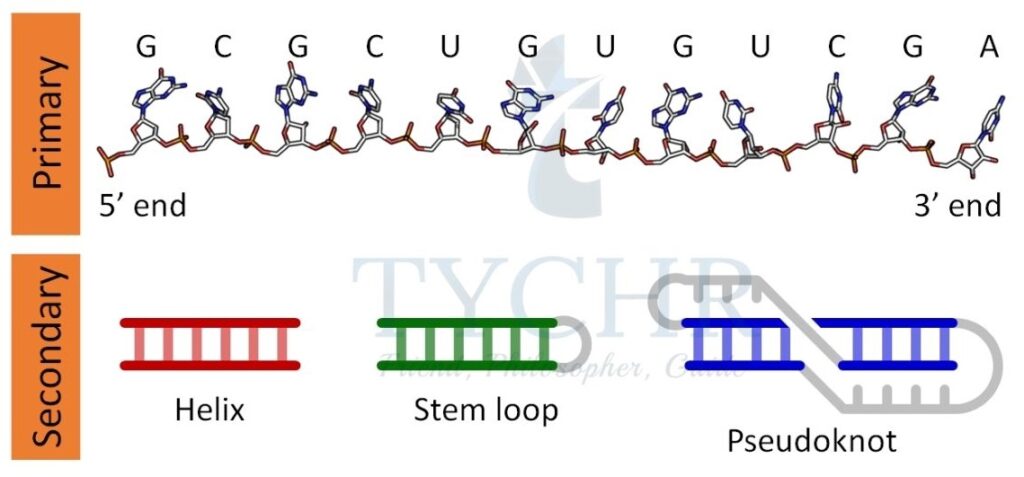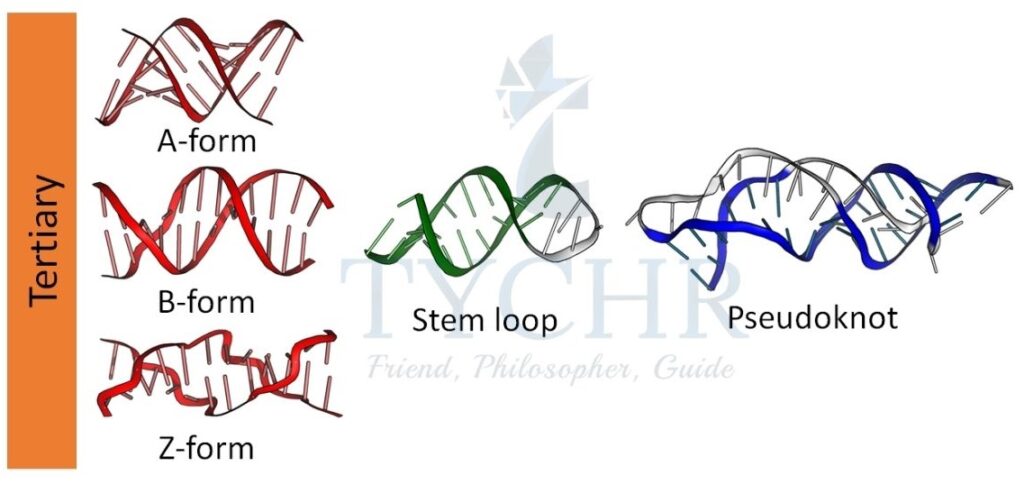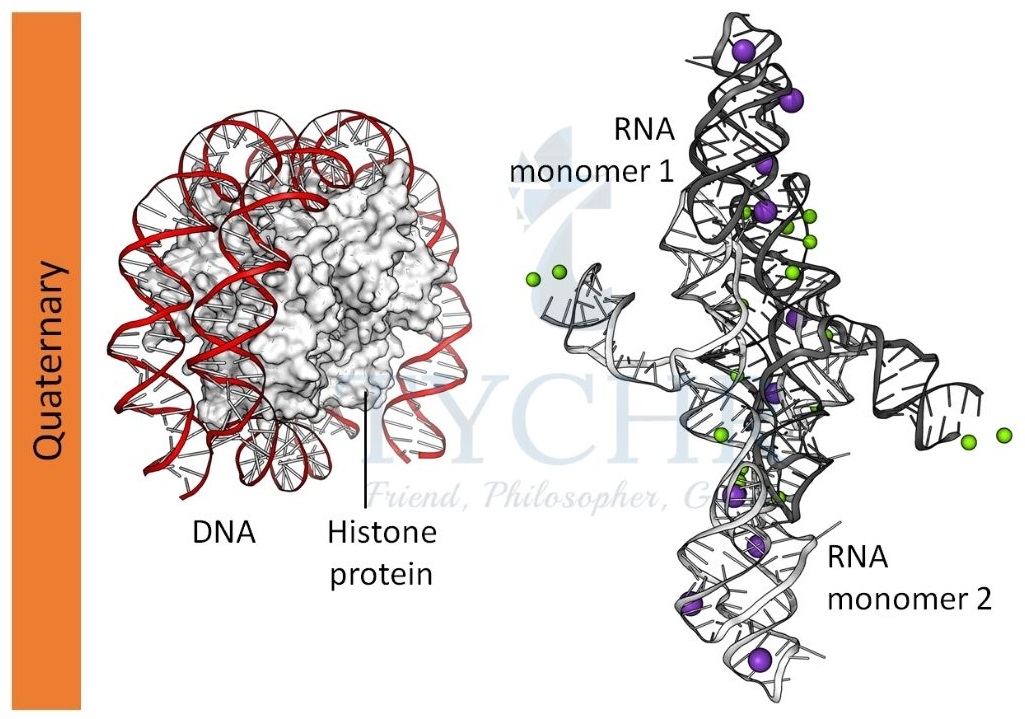Nucleic Acids Notes
Nucleic acids
Approaching the topic:
- Understanding the topics
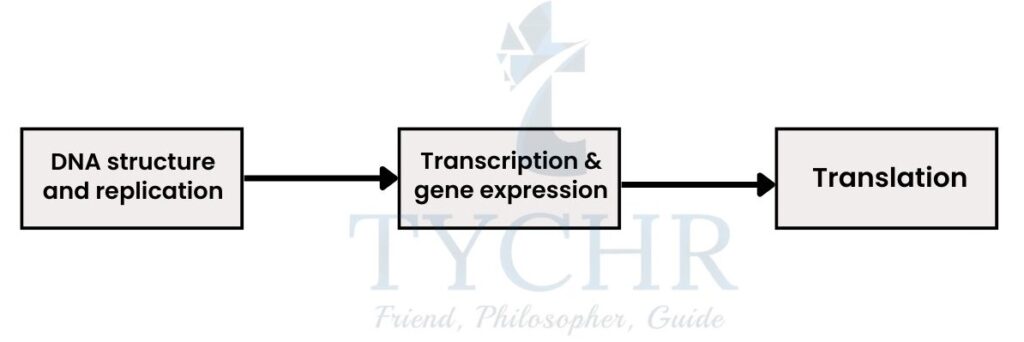
- Application of these concepts
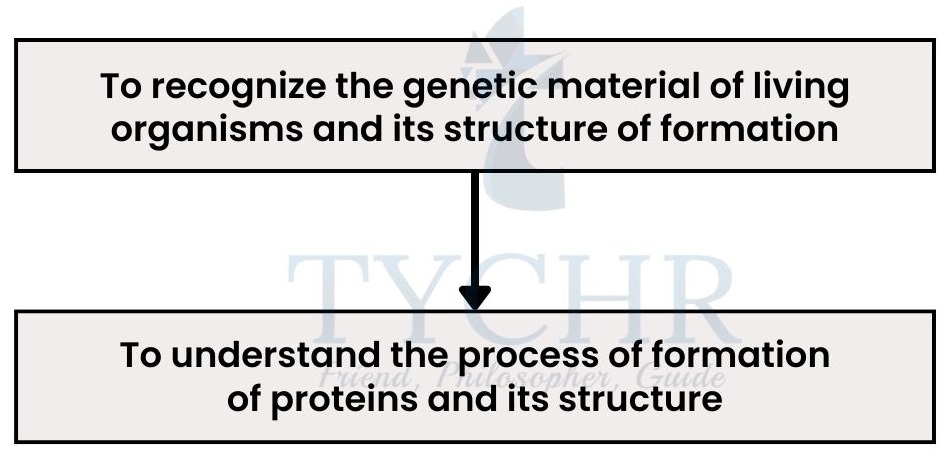
DNA: structure and replication
Recognition and structure of DNA
- DNA was confirmed as the genetic material by Alfred Hershey and Martha Chase in 1952, in their experiment using radioisotopes
The experiment follows:- Bacteriophages viruses (T2 viruses) were grown in tw different medium, with one containing radioactive phosphorus (32P) and the other containing radioactive sulphur (35S).
- Phosphorus being the part of the DNA, made the DNA of the virus grown in radioactive phosphorus medium to be radioactive. And sulphur being the part of protein, made the outer coat of viruses grown in radioactive sulphur medium to be radioactive.
- These two types of bacteria are allowed to infect the E.coli cells and transfer their genetic material (which was not known).
- Then centrifugation is done to separate out protein coat of the virus from E.coli cells. The proteinaceous coat separates out as supernatant and the cells were settled down.
- Bacteria infected with the viruses having 32P found to have radioactive DNA and bacteria infected by 35S do not have radioactive DNA. This indicates that DNA gets transferred from virus to bacteria as the genetic material.
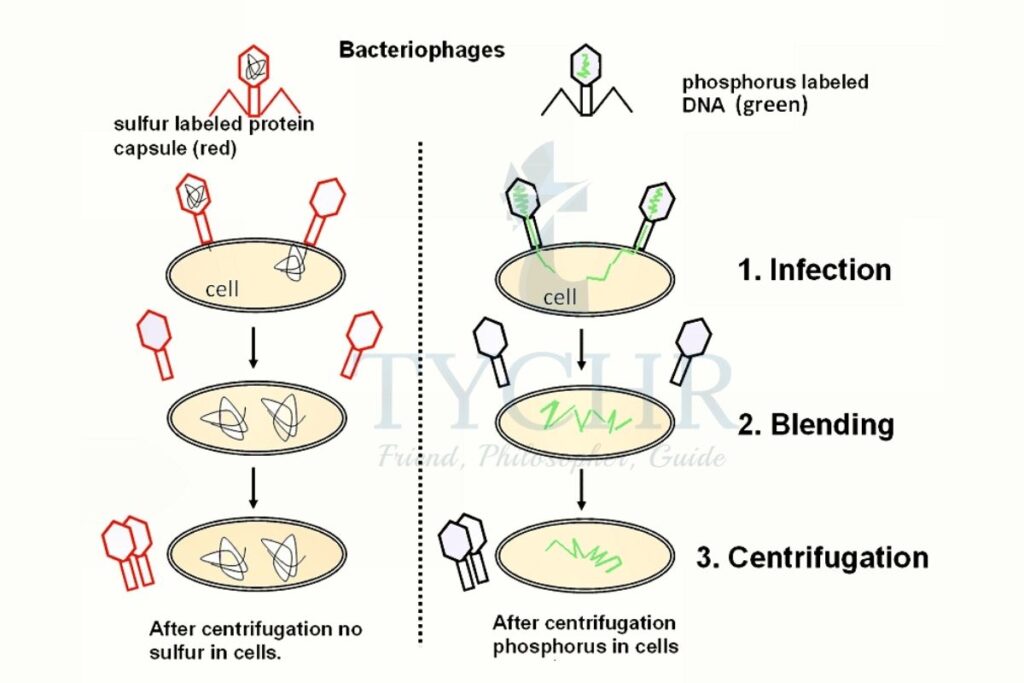
Figure 7.1 Diagrammatic representation of Hershey and Chase experiment
- Structure:
- DNA is a double stranded structure, with each strand consisting of alternating deoxyribose sugar and phosphate molecules as a backbone.
- Deoxyribose sugar and phosphate group are attached by phosphodiester bond formed between the hydroxyl group of 3’ carbon pf deoxyribose and phosphate group attached to the 5’ carbon of deoxyribose.
- Successive nucleotides are attached with each other by this bond only, forming a single stranded chain.
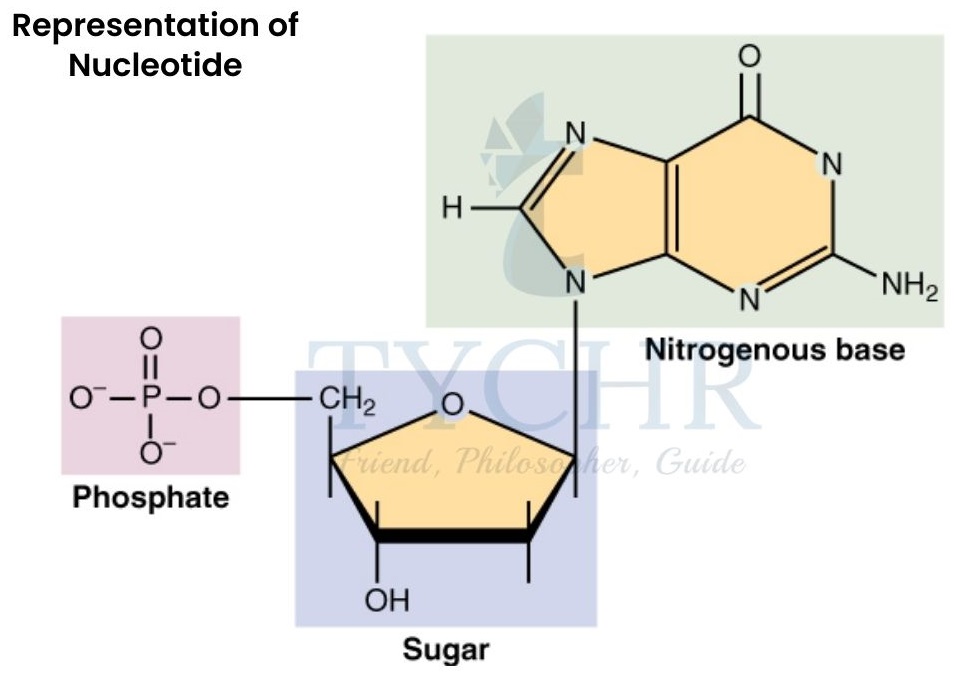
- It becomes double stranded by complementary base paring with the other same strand but opposite in orientation.
- There are 4 nitrogenous bases, each of which is present on a pentose sugar forming a complete nucleotide. Two of which are purines (double-ring structures) named adenine and guanine, and the other two are called pyrimidines (single-ring structures) named cytosine and thymine.
- Complementary base paring is such that the purines will pair with pyrimidines or vice versa. Adenine pairs with thymine with two hydrogen bonds and guanine pairs with cytosine with 3 hydrogen bonds.
- Packaging of DNA
- Eukaryotic DNA is 2.2 metres in length and contains 6.6 × 109 bp.
How such a large chromatin exists inside a very small nucleus? - DNA molecules paired with the histone proteins found in the nucleus.
- The DNA is negatively charged and histone proteins are residues of amino acids lysine and arginine which are positively charged.
- The negatively charged DNA wrapped around the positively charged histones to make a bead-like structure called the nucleosome.
- → A nucleosome consists of 2 units of each of four different histone proteins (H2A, H2B, H3, H4) forming a histone octamer and a 200 bp of DNA helix, wrapped. An additional histone protein named H1 is present to further packaging the whole structure.
This is how; the chromatin becomes the supercoiled structure and has a ‘beads- on-string’ like structure.
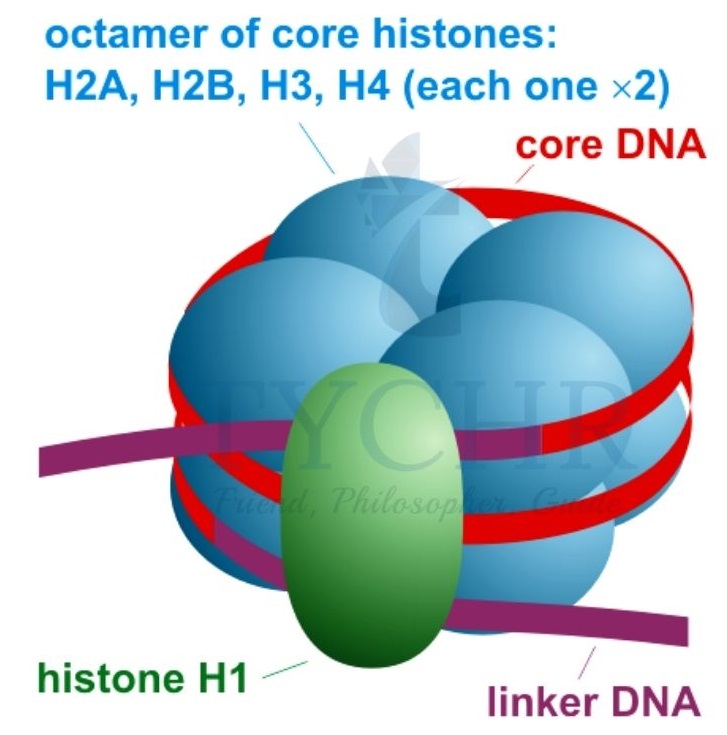
Figure 7.2 Histone octamer
- Eukaryotic DNA is 2.2 metres in length and contains 6.6 × 109 bp.
- Types of DNA sequences
- Only 2% of the total human DNA codes for proteins and other materials required for protein synthesis in the cell.
- Satellite DNA: A large amount of DNA is composed of highly repetitive sequences which are 5-300 base pairs per sequence. The cluster of these repetitive sequences in certain areas is called satellite DNA. They do not code for any proteins.
- These are transposable elements e. they can translocate themselves in a genome, therefore also called jumping genes.
- Structural DNA: These are highly coiled DNA which does not code and therefore called pseudogenes.
- Short tandem repeats (STRs): These are repetitive sequences of DNA composed of 3-5 bp, which are used in DNA profiling/DNA
DNA replication and its elongation
- This process occurs during the cell division in which the DNA content is doubled.
- It is a remarkable accurate process and occurs at the rate of 4000 nucleotides per second.
- This is also an enzyme catalysed process involves helicase and DNA polymerase.
- Two complementary strands produced takes up the free floating nucleotide in the nucleoplasm and again form the double stranded DNA.
- DNA polymerase enzymes catalyse the new bond formation between the nucleotides and the complementary strand.
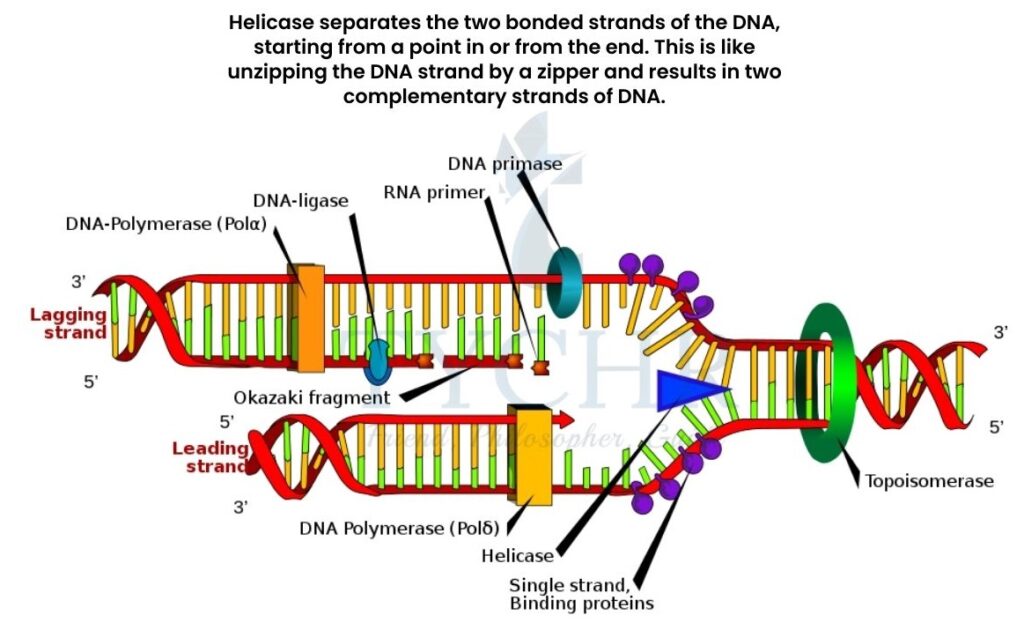
- It is a semi-conservative process because half of the newly synthesised DNA is still old. Meselson and Stahl’s experiment proves the semiconservative nature of DNA.
- DNA replication starts from the origins of replication and these sites are present only in eukaryotic cells but not in the prokaryotic cells.
- This is a complete enzyme-mediated process. Primase gets attached to the replication fork which adds a primer (short RNA sequence of 5-10 nucleotides long) for initiating the addition of new nucleotides.
- DNA polymerase III adds nucleotides in 5’ 🡪 3’ direction while DNA polymerase I
removes the primer and replaces it with DNA nucleotides at the end. - Energy required for this process comes from the dNTP (deoxynucleoside triphosphate) that is added.
- They release two phosphate groups to provide essential energy and the remaining nucleotide gets attached for elongation.
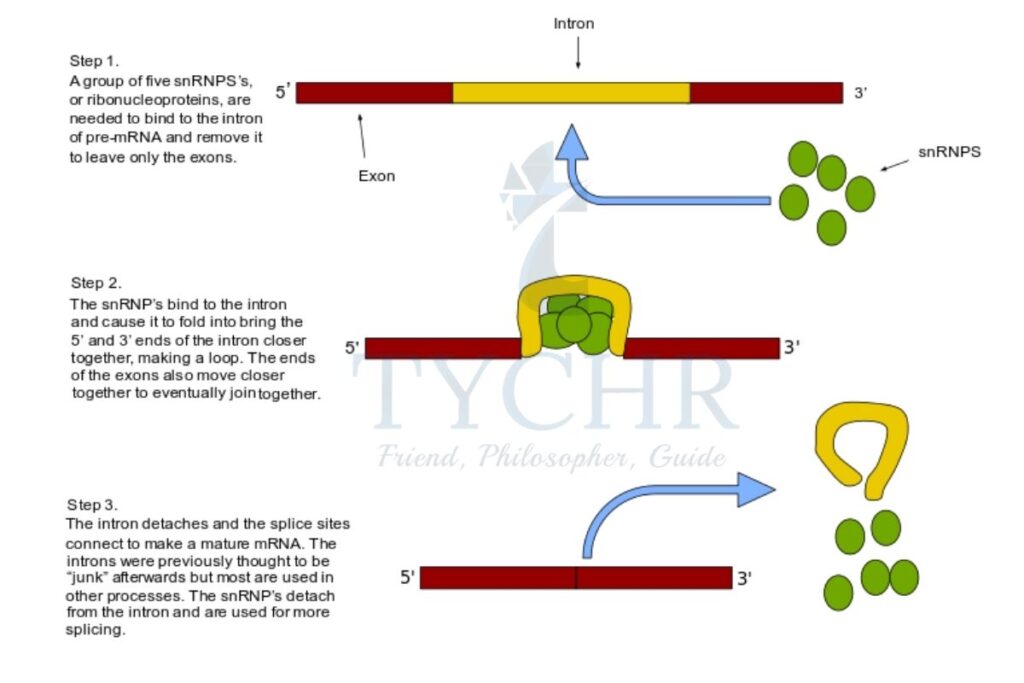
- DNA polymerase works in 5’ à 3’ direction, but the two template strand produced after unzipping the DNA are complementary to each other with opposite orientation (one is 5’ à 3’ and the other is 3’ à 5’).
- The addition of new nucleotides is also complementary to the template strand and therefore on a template strand with 3’ à 5’ direction a continuous leading strand is formed. But on strand with 5’ à 3’ direction, discontinuous lagging strand is produced.
- These fragments of lagging strand are called Okazaki fragments. Primase and all other enzymes are needed again and again to form each fragment.
- All the formed fragments of lagging strand are joined together by the enzyme called ligase.
- There are certain enzymes which proofread the formed DNA for any possible errors.
Transcription and gene expression
Transcription
- One of the two major sets of reactions leading to protein synthesis, other is translation.
- Genes are present on the DNA inside the nucleus and the protein synthesis occurs outside the nucleus in the cytoplasm. Therefore the mRNA (messenger RNA) acts as the intermediary molecule to transfer the information for protein synthesis from nucleoplasm to cytoplasm.
- Process follows:
- Unzipping or separating of the double stranded DNA, at the location of the specific gene using RNA polymerase for the whole process.
- RNA polymerase moves along one of the unzipped DNA templates, RNA nucleotides present in the nucleoplasm binds to the template strand of the DNA.
- Uracil is now paired with adenine instead of thymine.
- Single, shorter (than DNA) mRNA strand is formed.
- The strand which has the same base sequence as that of mRNA (while having uracil in the place of thymine) is called sense strand. And the other template which is having complementary base sequence is called antisense DNA strand.
- The mRNA detaches from the template DNA by a terminator sequence of amino acids and floats in the nucleoplasm which gradually passes through the nuclear pores into the cytoplasm.
- This mRNA has all the information of polypeptides synthesis in the form of codon triplets (set of three bases).
- The transcription section of DNA consists of promoter, transcription unit and a The promoter is the non-coding functional unit that starts this process with the help of enzymes.
- When a terminator sequence arrive (sequence that does not code for anything), the transcription stops and the mRNA detaches.
Slicing
- This is post-transcription process for removal of non-coding sequence called introns
from the pre-mRNA, so that only exons remain. - Spliceosomes are used which contains snRNAs (small nuclear RNAs or snurps), which remove the introns and a poly-A tail (50-250 adenine nucleotides) is joined at 3’ end and capping of methyl guanosine triphosphate is done at 5’ end.
What could prevent transcription? The answer is methylation of any gene expression. Addition of methyl group to DNA, makes DNA inactive and prevents transcription. Methyl group causes section of DNA to wrap more tightly and thus transcription could not happen. Methylation of DNA may stay as it is over several cell divisions and thus methylation patterns remain the same. This consistency of methylation patterns is somehow used in diagnosis of cancer. |
Translation
Process and its signification
- Translation
- Process of synthesis of polypeptide with the help of cell organelle, ribosome.
- Three types of RNA are used in this process namely; mRNa, rRNA, tRNA
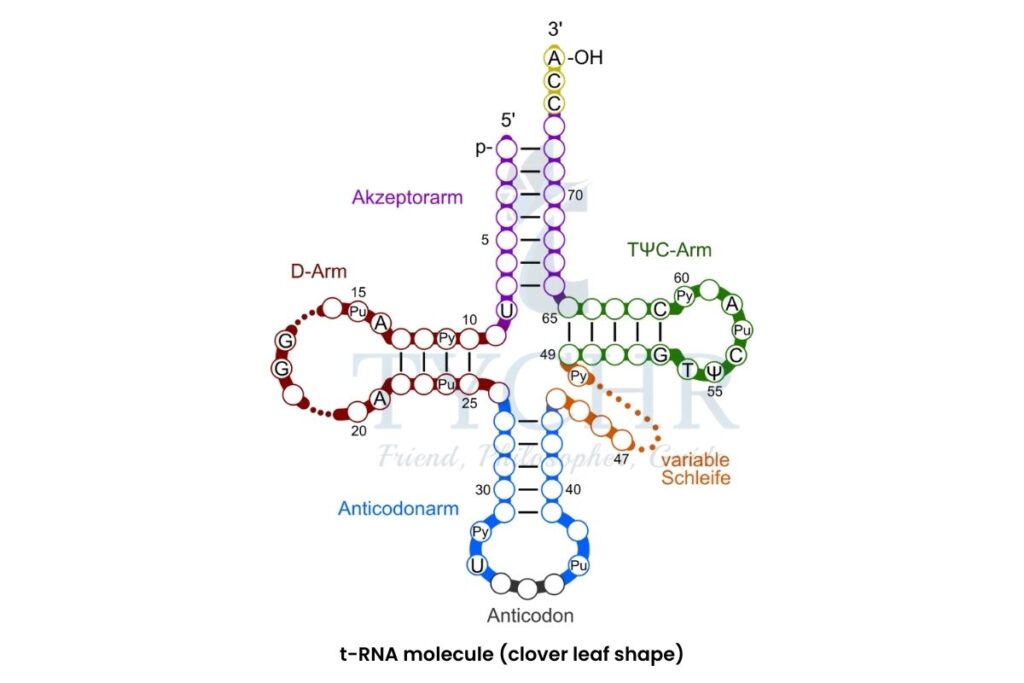
Figure 7.5 t-RNA molecule (clover leaf shape) - Process follows: It occurs in four considerable
- Initiation phase: The tRNA molecule gets attached with the ribosomes to start the translation process. Specific tRNA molecules gets attached whose anticodon must be complementary to the first codon triplet of mRNA molecule.
- It starts with start codon AUG (methionine) of amino acid and UAC, its complementary at tRNA.
- This process makes use of 20 enzymes, each provide active site for specific amino acids and tRNA.
- Elongation phase: Two tRNA molecules attach with the ribosomes at two separate positions in one line , one at the start (at A site) and the second (at P site) to continue with the second triplet and bring a second amino acid, through enzyme catalysed peptide bond.
- Translocation phase: The first tRNA molecule breaks its bond from the first amino acid it synthesised and shifts to the E site and the second tRNA shifts from its position (which was A site) to the position earlier occupied by the first tRNA (P site). It creates the room for the third tRNA to get in and occupy the P site.
- This repetitive process continues until the last triplet codon of the mRNA arrives which is in fact the stop codon like UGA and UAG which do not code for any amino acid. (Termination phase)
- The entire mRNA is now translated into the polypeptide which now floats in the cytoplasm.
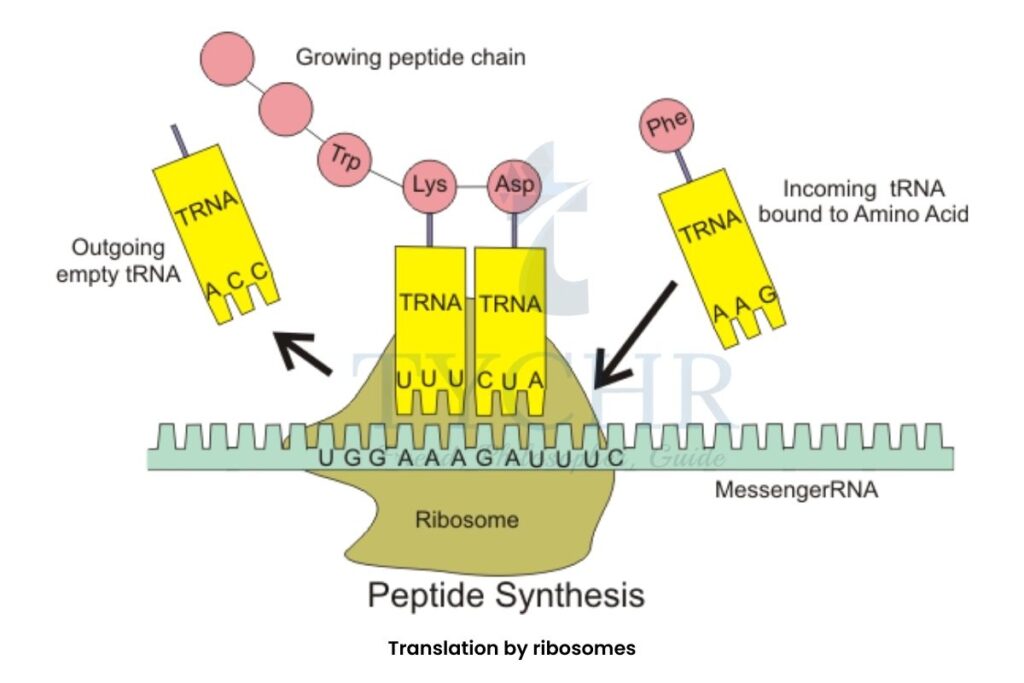
Levels of polypeptide and types of protein structure
- Two or more polypeptides bond together to perform a particular function, together they are considered as protein.
- All the organisms are found to be genetically different due to specific DNA sequences called the genome and so their proteome. Each individual has a unique set of proteins that he or she can synthesise.
- Structure of proteins goes from the simple primary to the globular quaternary. It possesses a three-dimensional shape (specific shape for the particular function).
